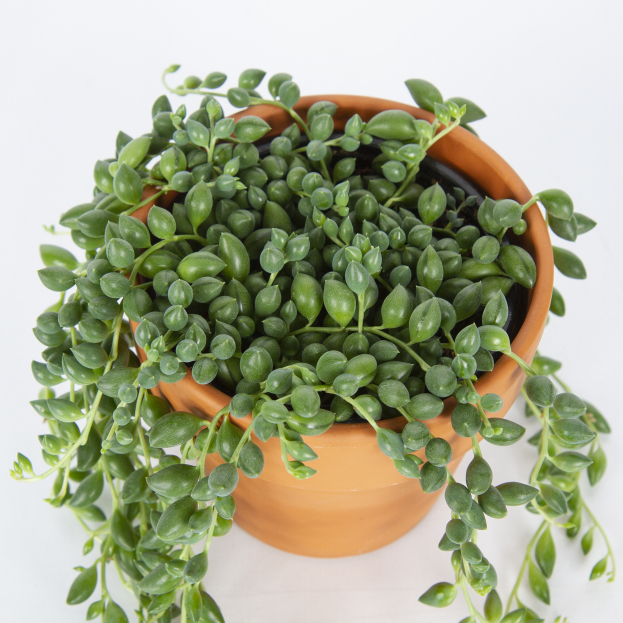
String of Tears (Senecio herreianus) plants prefer bright, indirect light. They thrive in a location where they can receive several hours of sunlight each day, but they should be protected from intense, direct sunlight, as it can scorch their delicate foliage.
Make sure the top of the pot gets enough light to avoid damp soil, root rot, pests, and plant damage. If your plant is in a hanging basket or somewhere that light is not reaching the soil on your plant, you can supplement with a grow light.
Like most succulents, String of Tears plants have low watering needs. Allow the soil to dry out partially between waterings, then thoroughly water the plant, allowing excess water to drain away. Overwatering can lead to root rot, so it's essential to avoid soggy soil conditions. During the winter months, reduce watering frequency. When watering into a pot without drainage holes, be sure to discard any excess watering sitting at the bottom of your pot to prevent root rot or pests.
Plant your String of Tears in well-draining soil mix specifically formulated for succulents or cacti. A mixture of potting soil, perlite, and coarse sand works well to ensure adequate drainage and prevent waterlogged roots
During the growth period, usually from spring to early autumn, sparingly feed your String of Tears plant. Utilize a balanced, water-soluble plant food, diluted to half its potency, and provide it to your plant monthly. Avoid fertilizing in the winter season when the plant is dormant.
These succulents prefer moderate temperatures ranging from 65°F to 80°F (18°C to 27°C). They can tolerate slightly cooler temperatures, but it's best to avoid exposing them to frost or extreme cold.
String of Tears plants are easy to propagate from stem cuttings. Simply cut a healthy stem with clean scissors, allow the cutting to callus for a day or two, then plant it in a well-draining potting mix. Keep the soil lightly moist until new roots form. You can also root them in water then plant into soil once roots longer than 2" develop.
String of Tears is considered toxic to pets.
Yes your String of Tears can flower.
Parts of the stem on your plant may loose foliage or fall of due to the plants soil drying out too much at the top. String of Tears have a delicate root system and if exposed to longer periods of dry soil then it may cause your plant to loose or have its foliage dry up. If you bottom water your plant, ensure to mist or water the top of your plants soil to ensure that its entire root system is saturated when watering.